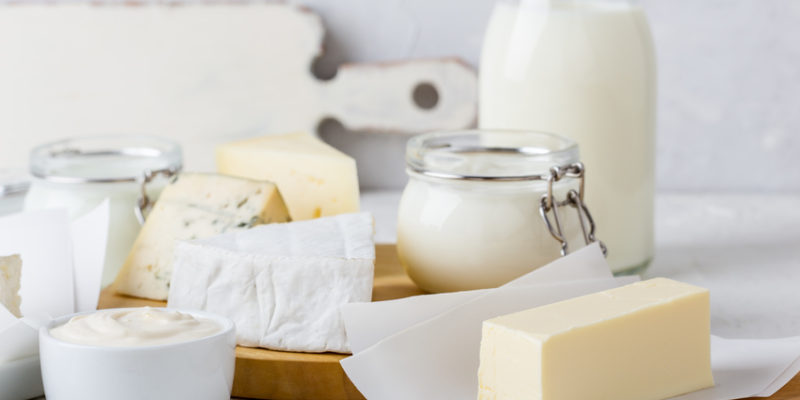Multiple Vitamin K Forms Exist in Dairy Foods (Fu X et al.)
The plant-based form of vitamin K (phylloquinone, vitamin K-1) has been well quantified in the US diet. Menaquinones (vitamin K-2) are another class of vitamin K compounds that differ from phylloquinone in the length and saturation of their side chain, but they have not been well characterized in foods. A paper recently published in Current Developmental Nutrition examines the K content (K1 and K2) in various foods, aiming to 1) quantify phylloquinone and different forms of menaquinones (MK-4 through MK-13) in milk, yogurt, Greek yogurt, creams and cheeses; and 2) compare the menaquinone contents of full-fat, reduced-fat, and nonfat dairy products.

Using dairy samples either obtained from the USDA National Food and Nutrient Analysis Program or purchased from retail outlets, researchers quantified the phylloquinone and menaquinone concentrations by mass spectrometry technology.
The results showed that full-fat dairy products contained appreciable amounts of menaquinones, primarily in the forms of MK-9, MK-10, and MK-11. Researchers also measured modest amounts of phylloquinone, MK-4, MK-8, and MK-12 in these products. In contrast, there was little MK-5 through MK-7 or MK-13 detected in the majority of dairy products.
The total vitamin K contents of soft cheese, blue cheese, semi-soft cheese, and hard cheese were (means ± SEMs): 506 ± 63, 440 ± 41, 289 ± 38, and 282 ± 5.0 µg/100 g, respectively. Non-fermented cheeses, such as processed cheese, contained lower amounts of vitamin K (98 ± 11 µg/100 g). Reduced-fat or fat-free dairy products contained ∼5-22% of the vitamin K found in full-fat equivalents. For example, total vitamin K contents of full-fat milk (4% fat), 2%-fat milk, 1%-fat milk, and nonfat milk were 38.1 ± 8.6, 19.4 ± 7.7, 12.9 ± 2.0, and 7.7 ± 2.9 µg/100 g, respectively.
“To the best of our knowledge, this is the first report of menaquinone contents of US dairy products. Findings indicate that the amount of vitamin K contents in dairy products is high and proportional to the fat content of the product,” the researchers concluded.
“Although menaquinone bioavailability has not to our knowledge been studied with the use of stable isotopes bacterially produced MK-7 isolated from a food source natto, a fermented soybean product, can be absorbed and is attributed to multiple health benefits, including bone and cardiovascular health. More recently, studies have shown that the consumption of dairy products fortified with individual menaquinone forms are absorbed and may have greater bioactivity than menaquinones delivered in supplement form.”
Dr. Katarzyna Maresz, president of the International Science and Health Foundation, expressed disagreement with the researchers conclusion that the food supply is a sufficient source of Vitamin K2, making it an adequate source of the essential nutrient over supplementation. “For example, while the team found a relatively high amount of K2 in US foods, Prof. Cees Vermeer recently published a paper stating that gouda cheese from the US had no K2 content at all,” she says. “And while MK-9 was the major form quantified in the dairy, which is consistent with the previous reports, this new data indicated 5 to 10 fold higher MK-9 and MK-10 content in dairy products than previously reported. And they offer no explanation for this.”
“Ideally we would obtain all of our nutrients from food. But while some K2 is found in foods, one can not rely on obtaining sufficient amounts daily from diet alone to deliver health benefits,” Maresz adds.
Reference:
Fu X et al. Multiple Vitamin K Forms Exist in Dairy Foods. Curr Dev Nutr. 2017 June 1;1(6):e000638.